Reno-Tahoe chefs and restaurant owners share how their heritages have shaped their foods.
After watching the recent documentary Roadrunner about my favorite culinary icon, the late Anthony Bourdain, I went down a rabbit hole of reading articles about the chef-turned-world-traveling TV host. Ever the wordsmith, Bourdain understood the deep connection between food and identity.
“Food is everything we are,” Bourdain said in a 2010 Slate interview. “It’s an extension of nationalist feeling, ethnic feeling, your personal history, your province, your region, your tribe, your grandma. It’s inseparable from those from the get-go.”
Indeed, for chefs and home cooks alike, food often is a window into who they are — a glimpse at where they came from and what they value. And with an ever-diversifying population in Reno-Tahoe, we’re lucky to experience cuisines from chefs and restaurant owners from all over the globe who take immense pride in sharing their heritages through nourishment.
From homemade pasta techniques cultivated in Lake Como, Italy, and now crafted in Lake Tahoe to vegetarian Indian food in Reno inspired by family life in a small farming village in Punjab, the culinary stories to be discovered and savored across the region are abundant.
Lake Como to Lake Tahoe
At just five years old, Nicola Ambra has memories of helping his grandma roll out sheets of thin pasta to make ravioli and thumbing chunks of gnocchi dough down a ridged board to create the pasta’s characteristic texture.
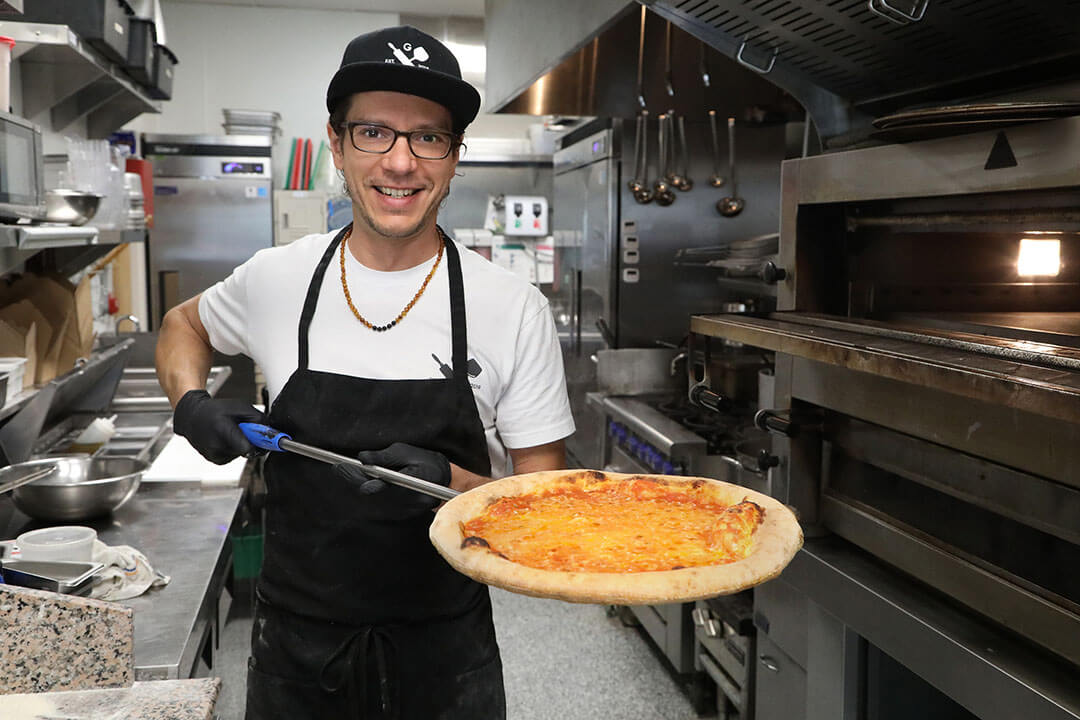
“My grandma was the person who gave me the passion for cooking. I decided right away when I was a kid that one day I was going to be a chef. It stayed with me my whole life,” says Ambra, who grew up near Lake Como, a glacial lake north of Milan set against the foothills of the Alps.
Nineteen years ago, Ambra’s two-week climbing trip to Yosemite turned into a move from Italy to California. Five years ago, he and his wife, Terri Wong, relocated from San Francisco to Tahoe with dreams of opening their own restaurant. With culinary school and pizza academy training under his belt, as well as experience working at five-star hotels and casual restaurants, Ambra decided to make his lifelong dream a reality. In 2019, he opened Gastromaniac Homemade Pasta & Pizza in South Lake Tahoe.
Today, using just water and semolina flour, Ambra makes seven varieties of fresh pasta daily: ridged rigatoni, corkscrew fusilli, snail-like lumache, ruffled bell-shaped campanelle, spaghetti, and Mafaldine — a wavy-edged ribbon pasta, an homage to his grandma, Mafalda.
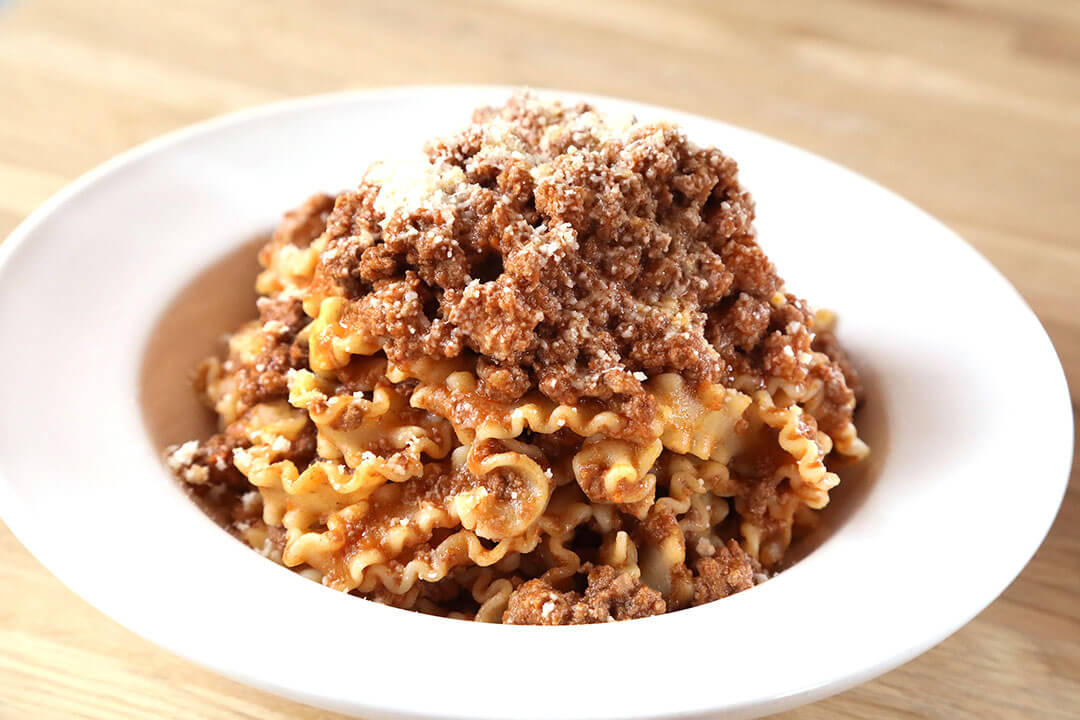
Ordering at the counter, the customer chooses their pasta shape and sauce — tomato basil, meat Bolognese (a family recipe), pesto, or three cheeses. Some diners opt for traditional Italian pizzas or the unique variety dreamed up by Ambra. Kick off the meal with a charcuterie board featuring prosciutto di Parma, speck, mortadella, salame San Gennaro, olives, and gnocco fritto (a puffed fried bread); then cap the affair with an airy tiramisu, creamy panna cotta, or cannoli Siciliani.
“A few good ingredients make a good dish,” Ambra explains. “That’s why I’m really trying to get everything from Italy. Cheese, oil, rice, all the flours, cured meats — everything comes from Italy, or otherwise I try to source it locally, especially for the produce.”
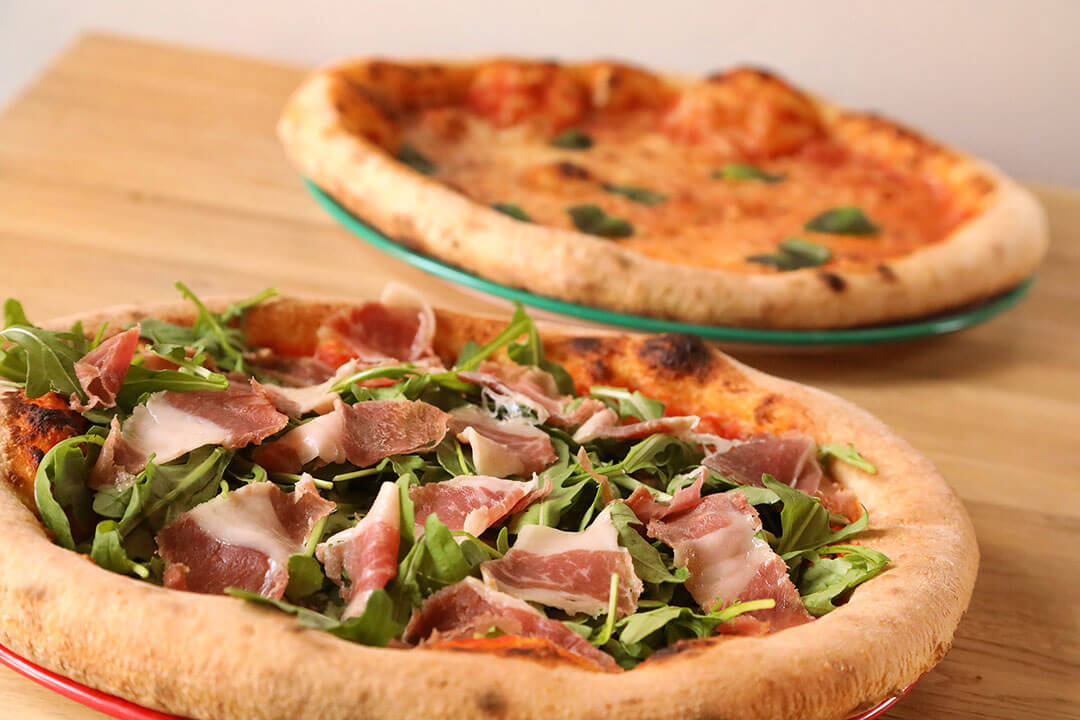
But don’t let the casual vibe of Gastromaniac fool you; the food is artfully made thanks to years of experience, and the wine list showcases the best of Italy, from the pricier La Gerla 2015 Brunello di Montalcino from Toscana to the more entry-level Vigneti del Vulture Pipoli Greco Fiano 2019 from Basilicata.
“The best Italian food is made by an Italian. We want to cook traditional and simple food like you’d have in Italy,” Ambra says. “We kept it a really casual counter service where anybody from any walk of life can come in and feel comfortable. I really think that the food scene is changing in Tahoe, and we wanted to be part of that change.”
South Korea to South Center Street
As fall brought cooler temperatures to South Korea, TJ Cho remembers, his family and neighbors got together with crates of freshly harvested cabbage to make kimchi, the salty, fermented vegetable dish that’s a staple of Korean cuisine.
“I remember, when I was a kid, the entire neighborhood gathering with a few cases of cabbage. They started brining and making the marinade,” Cho explains. “Some buried it in the ground in a clay pot for the fermentation process and storage to keep it fresh, or they kept it in the refrigerator.”
There are hundreds of varieties of kimchi made across Korean cuisine with a variety of vegetables, such as Napa cabbage and Korean radish, and seasoned with a wide range of flavors, including gochugaru (Korean chili pepper), green onions, garlic, ginger, fish sauce, and more.
At Arario, the Korean fusion restaurant in Midtown Reno that Cho owns with his wife, chef Hani, kimchi is one of the banchan, or side dishes, set on every table after orders are placed. Along with sweetened black beans, spicy cucumber salad, and pickled radish, for example, the seasonal side dishes exemplify the artful balance of sweet, salty, tangy, and spicy found throughout Arario’s menu.
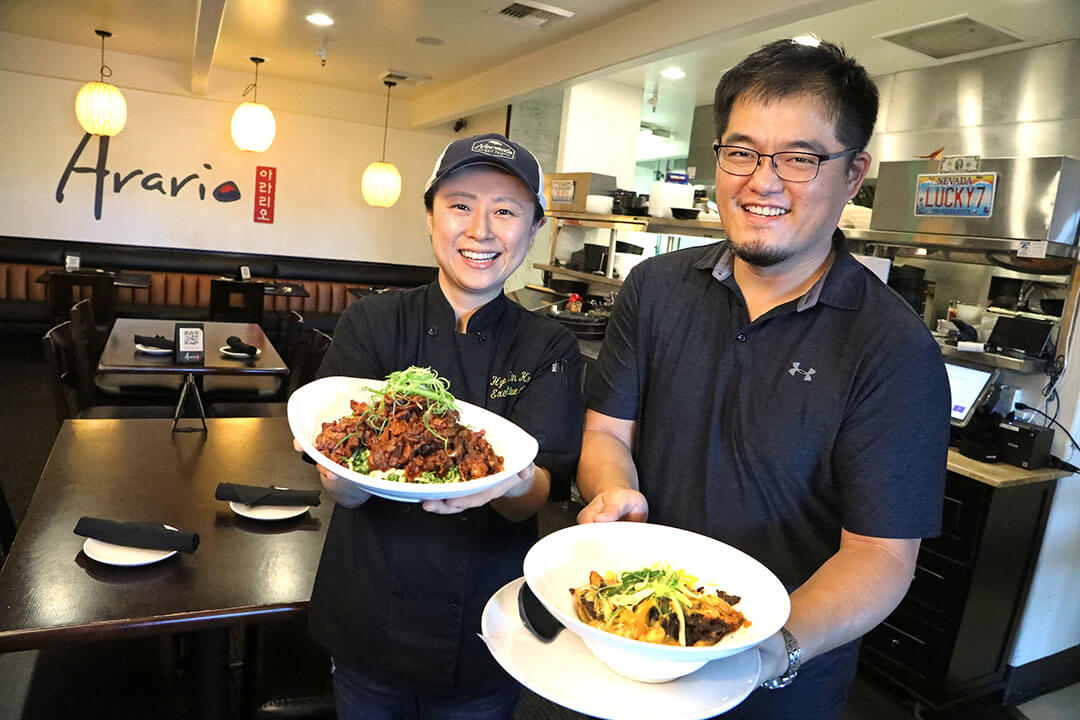
Hani, a culinary graduate of Osan University in South Korea, has crafted a menu that mingles traditional Korean dishes — tofu stews, bulgogi, and spicy squid spiked with the much-used fermented chili paste, gochujang, to name a few — with such contemporary fusion dishes as kimchi fries loaded with grilled meat, cheese sauce, teriyaki, and spicy mayo. Her broths and sauces all are made from scratch using special ingredients imported from Korea, such as chili flakes and sesame oil, to achieve the proper flavor.
“Reno is a small town, but it’s growing bigger, and just like any other city, it is important to have these different experiences,” TJ says. “It’s not just about the food. We try to create an atmosphere for people to have fun and enjoy spending lunch or dinner with their friends and family.”
Rural Punjab to Reno
Growing up in a small farming village in Punjab, India, Serj Johal was surrounded by his family’s home cooking. From morning to night, his mother and aunt were in the kitchen preparing meals for the children, elders, and other family members working in the surrounding fields that fed them.

“I always loved being in the kitchen eating the freshest roti I could find or whatever was coming off of the stove,” Johal recalls. (Roti, also known as chapati, is a round, unleavened flatbread made with whole wheat flour.)
Ultimately, the family left India and then came to Reno in 1994. Years later, while working at the Great Basin Community Food Co-op, Johal spoke with a friend who’d recently visited India about a restaurant that offered only one entrée a day — a large platter containing numerous bowls filled with a colorful variety of sweet, tangy, and savory selections.
“I said, ‘That’s called a thali, or a plate. If you visit somebody in their home, they make you a plate. Maybe a small plate or big plate; it depends on how much people could afford, but it’s what you do for your guest,” Johal recalls.
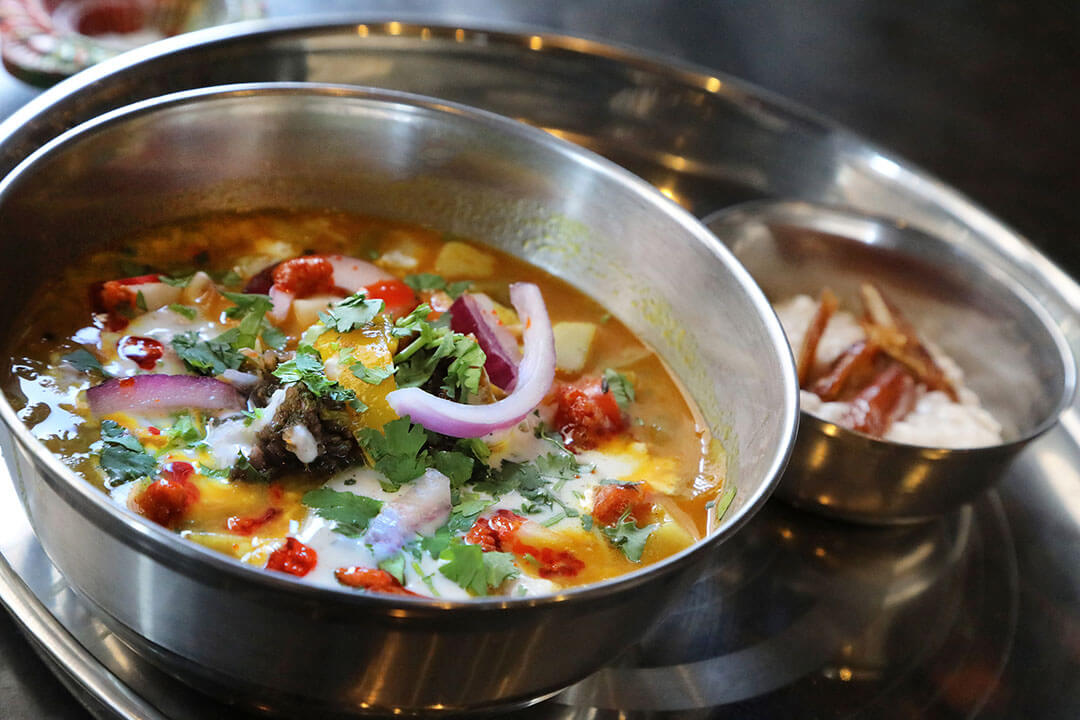
Thus, the idea for Thali, a home-style vegetarian Northern Indian restaurant, was born. And after a series of successful pop-ups to test the concept, Johal officially opened Thali inside West Street Market in Downtown Reno in 2017.
Using as much local produce from growers such as Prema Farm (Reno), Lattin Farms (Fallon), and Reno Food Systems as possible, Johal and his wife, Adriana Marin, serve diners bottomless house plates filled with lentils, beans, yogurt, ample vegetables, chutney, basmati rice with onions and peas, roti, and a seasonal dessert. After five years of being the “power” behind the restaurant’s kitchen, Johal’s mother, Amarjit Kaur, recently retired.
“Sometimes people will come and ask, ‘Why don’t you have a traditional menu?’ So I have to explain why we don’t do it. But 95 percent of the people come in and say, ‘OK, you are feeding us.’ I tell them, ‘You are coming to my house, and this is how we eat in India. This is our hospitality.’ I’m trying to teach them a traditional way of eating from India, from my village,” Johal explains.
Johal also sees the restaurant as a way to nourish the community by treating food as medicine, as his mother taught him, and support local farmers as they did back in India. He cooks with the seasons, and in the cooler months, you’ll find regional produce in his dishes, such as mustard greens, kale, spinach, mushrooms, pumpkin, and butternut squash.
“Especially for my Indian community, it reminds them of home or their moms’ cooking. I have seen people cry because they haven’t eaten their moms’ food like this in so long. I feel valuable,” he says. “I feel like we need these places in Reno, where we are becoming more culturally diverse.”
Basque Country to Carson Valley
In the 1850s, immigrants came to the United States from Basque Country, a region straddling the France-Spain border, pushed out by war and motivated by the California Gold Rush. Many settled in Nevada, enticed by land claims and the prospect of making better money raising sheep to sell to miners.
“Like many Basque restaurants, ours started out as a boarding house,” says Marie Louise Lekumberry, who co-owns J.T. Basque Bar and Dining Room in Gardnerville with her brother, J.B.
Just like the days of the boarding house, J.T. — the initials of the original owners — still serves hearty multi-course, family-style meals that were designed to entice sheepherding boarders to select their accommodations over the competition.
“The Basque Country begins at the seacoast on the Bay of Biscay, and then it moves up to the foothills of the Pyrenees Mountains. On the coast, you’re going to be eating a lot of seafood, but when you get farther up into the mountains, you’ll be eating more of what we serve at J.T. and what was traditionally served in the Basque hotels of the American West,” Lekumberry says.
Ingredients such as beans, which have a longer shelf life out on the range than some other vegetables, became a staple of the Basque-American cuisine. Beef, lamb, and chicken are cooked with garlic, onions, bell peppers, tomatoes, and paprika, and no parts of the animals are wasted.
“Basques, like a lot of other cultures, eat the entire animal, so we have a lot of organ meat, like oxtail stew, beef tongue stew, pigs’ feet with tripe and sweetbreads,” she says.
The stick-to-your-bones meal is best washed down with a glass of the red table wine or a Picon punch, a Basque favorite made with Amer Picon (a bittersweet orange French apéritif), grenadine, and soda served over ice with a brandy float and lemon twist.
“You’re eating a similar meal to what someone was eating 100 years ago in a Basque hotel,” Lekumberry says.
Thai Street Carts to Midtown Reno
Opal Rahm remembers that as a child, before school every morning, she would eat moo ping — skewered sticky sweet pork seasoned with coriander, soy sauce, sugar, coconut milk, and lime — from a food cart in her neighborhood in Bangkok, Thailand.
“We grew up eating street food,” says the co-owner and chef of Moo Dang Thai in Reno. “Back in Thailand, I wasn’t interested in cooking because we had so much street food, and it was cheap, good, and fresh.”

After a career in biochemistry researching vaccines, Rahm switched gears when she moved to the U.S. in 2008 and began working at a Thai restaurant in South Lake Tahoe. After meeting and marrying her husband, John, she decided there was more that she wanted to accomplish.
“I wasn’t satisfied with the taste of the Thai food at that restaurant or what was around us in Reno-Tahoe. I remember the food that my mom used to cook for me, and so I started to teach myself how to cook, and then I decided to have the restaurant of my dreams,” she says.
Together, Opal and John opened Moo Dang in Midtown Reno in 2015. Using the precision she learned as a scientist, Opal recreated her mother’s home cooking and the street food she missed from Thailand.
“Some of the menu I have to have because people expect it — pad Thai, drunken noodle. It’s already famous. But I just make it taste more intense, like back in Thailand,” Rahm explains.
But with other dishes, she hopes to push people beyond their comfort zones with strong Thai flavors stemming from bean paste, lemongrass, fermented fish, and fresh galangal — a pungent root related to ginger and turmeric.
While most people come in to order the more well-known papaya salad, Rahm also offers a style stemming from the Isan region of Thailand that features preserved black soft-shell crab and fermented fish — a flavor combination she grew up eating often. People have slowly been catching on.
“Sometimes you have to grow up with it to get it,” Rahm says. “I am proud to say we now sell a lot of the Isan style, and people come back for more. It has a very intense fishy smell, but it’s really tasty.”
It’s a balance of giving people what they want and know, but also keeping those dishes that are close to her heart on the menu.
“America is a melting pot. There are so many cultures and races. People get to know not just food but the culture, too. That’s important,” she says.
Claire McArthur has long believed that food is not just sustenance. It’s personal, it’s political, and it’s worth talking about. She’s grateful to the chefs and owners who opened up about their own food memories for this piece.
RESOURCES
Arario
777 S. Center St., Ste. 200, Reno
775-870-8202 • Arariomidtown.com
Gastromaniac Homemade Pasta & Pizza
3091 Harrison Ave., Ste. 120, South Lake Tahoe
530-600-2110 • Gastrotahoe.com
J.T. Basque Bar & Dining Room
1426 Hwy. 395, Gardnerville
775-782-2074 • Jtbasquenv.com
Moo Dang
1565 S. Virginia St., Reno
775-420-4267 • Thaimoodang.com
Thali
148 West St., Reno
775-470-5898 • Thalireno.com


